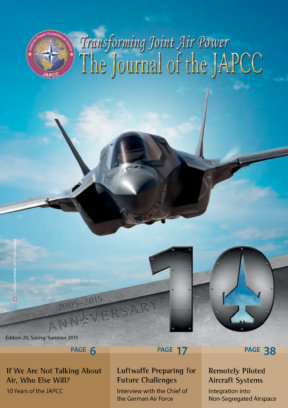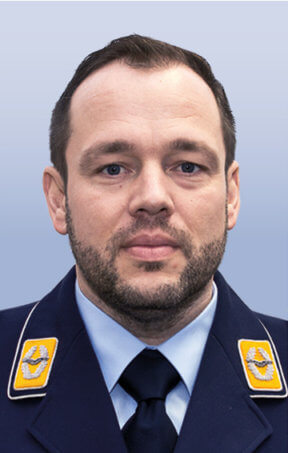Introduction
In 2013, the Hollywood movie ‘Gravity’ brilliantly depicted the effects that Space debris can have on objects orbiting the earth. The story is more fact-based than fiction. The Space Shuttle crew conducts an Extra-Vehicular Activity (EVA), working on a captured satellite. While the mission specialist and the mission commander repair a broken satellite panel, they are ordered to immediately abort the mission, execute the emergency satellite release procedure and return to the Space Shuttle. Two minutes later, the Space Shuttle is destroyed and the crew, except the mission commander and mission specialist, are killed. What happened? An Anti-Satellite (ASAT) weapon test created debris which hit other satellites and initiated a cascade of destruction, known as the Kessler Syndrome. The resulting cloud of debris took out the shuttle and killed the crew.
Is the story behind this movie science fiction or does it have a more serious background? Today, the amount of Space debris produced by mankind since the first rocket launch in 1957 has reached an alarming level. Such a destructive event in Space is only a matter of time.
Real-World Cases
In 2007, a Chinese ASAT test created more than 150,000 pieces of debris larger than 1 cm. Approximately 3,300 of these debris pieces are trackable with today’s sensors.1 The resulting debris cloud ranges from altitudes of 200 km up to almost 4,000 km, while the bulk of debris ranges from 800 km and 900 km.2 Today, more than 3,000 pieces of trackable debris are still on orbit and will remain there for decades. This ASAT test produced more than 18 % of today’s total debris population in orbit.
The 2009 collision of the Iridium 33 satellite with the Russian Cosmos 2251 satellite is the only other publically known event to date that significantly increased the Space debris population. The two satellites collided with a relative speed of 11.57 km / s, creating another 2,500 trackable debris pieces in Low Earth Orbit (LEO) between 650 km and 900 km.3
In addition to these two sources of debris, there are other sources like dead satellites or payloads, upper rocket stages, mission related objects (MROs), solid rocket motor slag residues, paint flakes, multilayer isolation foils, fragments after the brake-up of satellites, and so on.
The figure below shows the Space Surveillance Network’s (SSN) tracking of Space debris larger than 10 cm. This data is continuously updated by the US Joint Space Operations Center (JSpOC).
Today the US JSpOC makes between 380,000 and 420,000 observations every day, tracks more than 22,000 objects (including 1,100 active satellites) and provides more than 500,000 Conjunction Summary Messages (CSM)4 to worldwide users every year.
Although there are natural effects (decay and re-entry) that lessen the amount of orbital debris, mankind is creating more debris rapidly than it is reduced by the Earth’s atmosphere. As a consequence, the risk of a collision on orbit is rising. In the worst case, this could produce a debris density on an orbit that would deny its future use for a very long time and increase the probability of mission failure while flying through that orbital band to reach higher altitude orbits.
Space Situational Awareness
Space is a congested, contested and competitive domain. Modern military forces are dependent on Space capabilities and the advantages they can bring to the fight. According to US doctrine, ‘Space Situational Awareness (SSA) is fundamental to conducting space operations. It is the requisite current and predictive knowledge of the space environment and the Operational Environment upon which space operations depend’.5 The effects that resulted from the aforementioned Chinese ASAT test significantly raised the attention of scientists, politicians and military senior leaders as to the importance of SSA. But what is SSA?
There is no commonly agreed definition. The interpretation of SSA varies from academic, commercial, civilian and military users.6 For the purpose of this article, we will use the following definition:
‘SSA is the knowledge of Space-related conditions, constraints, capabilities, activities and the operational environment upon which Space operations depend.’
This definition focuses on the military perspective and includes elements which can influence the Space System and the related activities in and outside the battlespace.7 The main purpose of SSA is to allow friendly forces to employ Space capabilities and exploit them to the maximum extent. SSA also provides information on adversary Space capabilities, enabling friendly forces to take appropriate countermeasures, i.e. deceiving, degrading, delaying or denying adversary use of Space.
A prerequisite to gain SSA is the ability to detect, track, identify and maintain custody of objects and events in Space. Based on the US Satellite Sensor Network sensor’s inputs, the JSpOC provides specific SSA information accessible via its ‘Space Object Catalogue’.8 This data is available to all levels of command (tactical to strategic) and supports observation, planning, execution and assessment.
The Need to Include Space in NATO’s Common Operating Picture (NCOP)
NATO no longer owns or operates satellites.9 Nevertheless, NATO is heavily dependent on Space capabilities, e.g. SATCOM, Imagery Surveillance and Reconnaissance (ISR), integrated tactical warning and attack assessment, weather information and Position, Navigation and Timing (PNT, i.e. Global Positioning Satellite (GPS)).10
The development, employment and operation of Space capabilities is an expensive business and is usually a nationally sensitive topic. Most Space-based capabilities are high demand, low density and require efficient and effective de-confliction.
As stated in the US Doctrine JP 3-14, SSA is a prerequisite to successfully conduct Space operations. Within the Alliance, a few nations argue that NATO is actually not conducting Space operations due to the fact that NATO does not own or operate satellites. This interpretation is short sighted, as command and control of satellites is only one element of Space operations. The core of NATO Space operations is the effective and efficient coordination of Space capabilities, products and services offered to NATO (nationally or commercially) to conduct operations.11 These capabilities and their operating environment must be incorporated into the NCOP.
NATO and SSA
Does NATO need to be fully aware of the entire Space Domain? – Definitely not! The basis for NATO’s Space Operations is outlined in AJP 3.3 (A). But it has to be understood that the Space Operation mission areas are interdependent and intrinsically linked. It is essential for NATO to have proper information continually derived from SSA to ensure Space Force Enhancement. Nevertheless, in the context of holistic thinking and to provide comprehensive recommendations to leadership, additional data and information regarding all Space operation mission areas are required.
Based on NATO’s dependency on Space and the associated threats, NATO has to start to actively define the required data and information that nations and commercial companies must provide to ensure an effective and efficient coordination of Space Force Enhancement capabilities. NATO also requires educated and trained personnel who ask the right questions in order to interpret and assess the possible impacts on operations and advise commanders.
SSA Support to NATO Operations Examples
Space Weather Effects. Solar activities can influence the Earth’s ionosphere and constrict the propagation of electromagnetic waves. As a consequence, SATCOM or GPS can be degraded, denied, disrupted, or even destroyed. Space weather prediction, as part of SSA, is able to provide timely regional forecasts and effects to the use of radio communication and GPS. This information enables planners and war fighters to create and apply contingency plans.
ISR and OPSEC. ISR satellites are able to provide images of different spectral wave lengths. Knowledge on the orbital parameters and the capabilities of the sensors will help the ISR community to adjust observation windows, and help to support targeting and Battle Damage Assessment (BDA). Knowledge of a potential adversaries’ Space based ISR capabilities will help NATO to optimize Operational Security (OPSEC).
BMD Engagement and Collision Avoidance. Space debris might become a problem for Ballistic Missile Defence (BMD).
- Exo-atmospheric BMD: if an interceptor has to cross a region of high debris density, the potential for the interceptor to be hit by debris increases. Furthermore, Space debris can complicate the interceptor targeting process. Both scenarios can lower the probability of kill and thus lower mission success rate.
- Endo-atmospheric BMD: depending on the re-entry orbit of the debris, BMD systems could interpret such debris as a ballistic missile. This could lead to unnecessary engagements.
For those scenarios, SSA can support BMD to identify the right target or provide optimized windows of engagement.
Conclusion
The Hollywood movie ‘Gravity’ impressively depicts how Space debris can degrade the use of Space. Today, the question is not IF debris will hit a spacecraft or other debris; the question is WHEN and WHERE, and WHAT the consequences will be to NATO’s warfighting capacity. Space is already congested, contested and competitive. This condition will become more acute as the use of Space grows.
Due to NATO’s Space dependency and the contribution Space brings to operations, NATO has to have situational awareness on Space, similar to the domains of Air, Land, Maritime and Cyber. Although SSA and data sharing are a very sensitive topics to the Space faring nations, NATO must define its level of required situational awareness in the Space domain, set requirements and establish exchange mechanisms to fulfil those requirements.
Recommendations
Due to NATO’s Space dependencies and the threats that are associated with the deprivation of use of Space capabilities, NATO would be well advised to:
- Define an understanding of SSA and its relevance to NATO operations.
- Define information requirements to build up SSA.
- Negotiate appropriate SSA data exchange mechanisms with nations and other providers.
- Build a structure within NATO that is able to provide Space support to operations.
- Educate and train a cadre of Space Operations personnel.
- Develop an overarching Space vision, strategy and policy.












